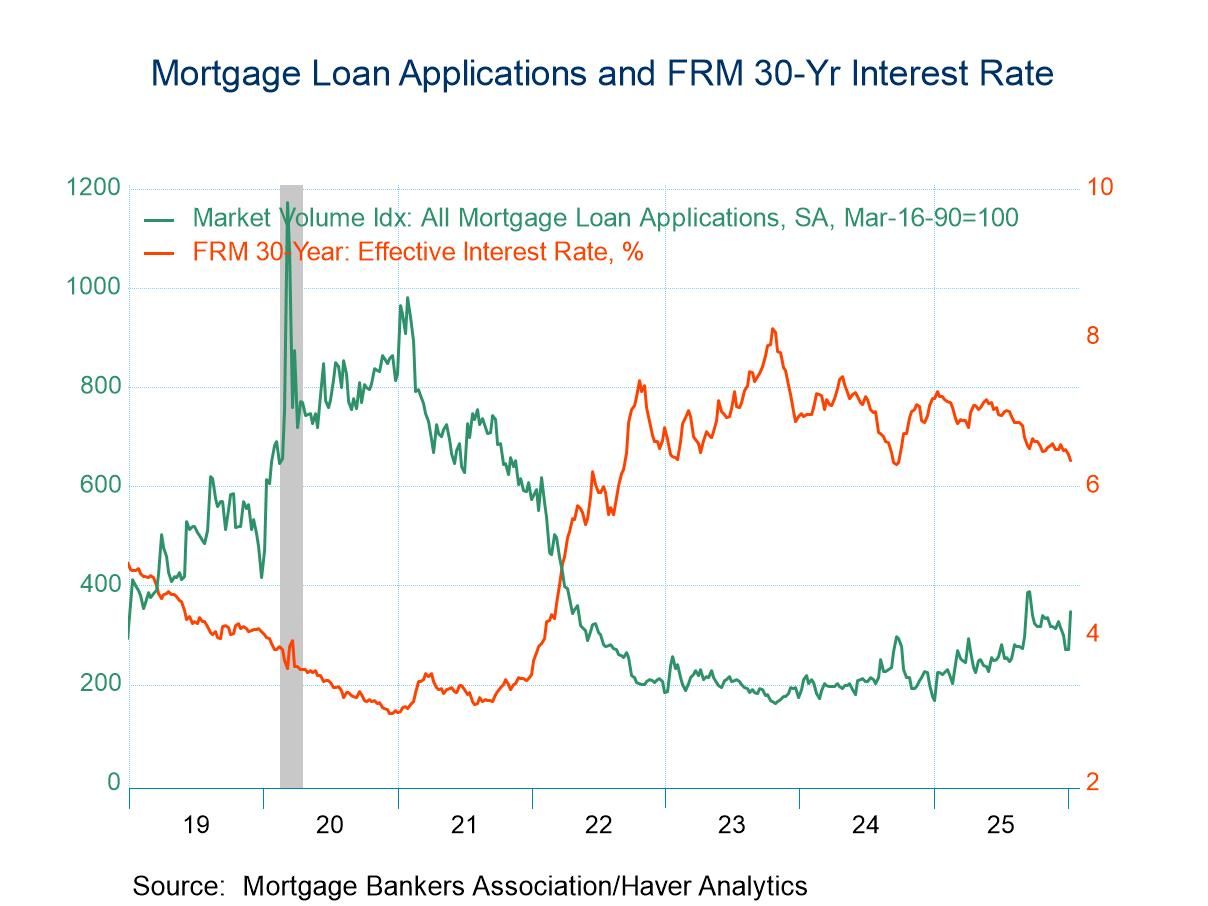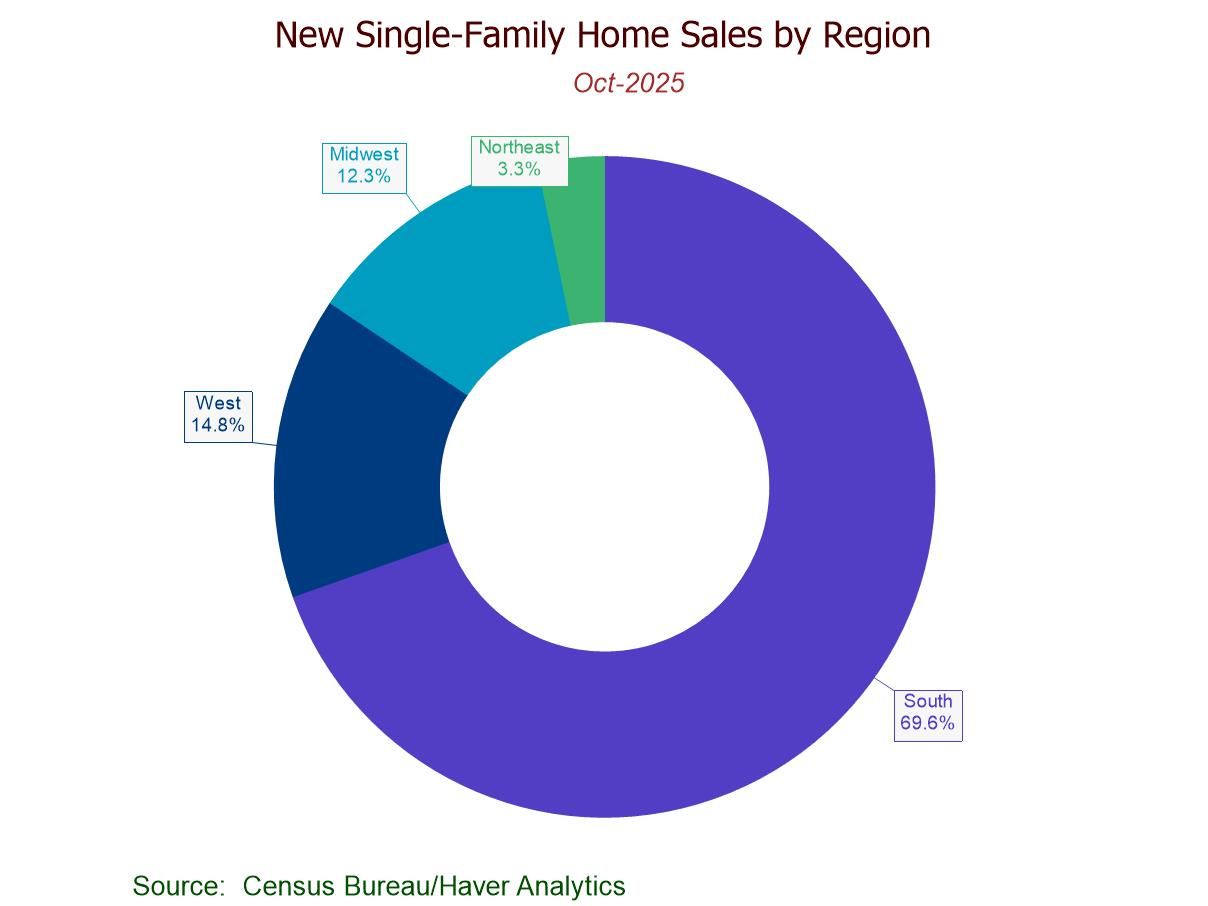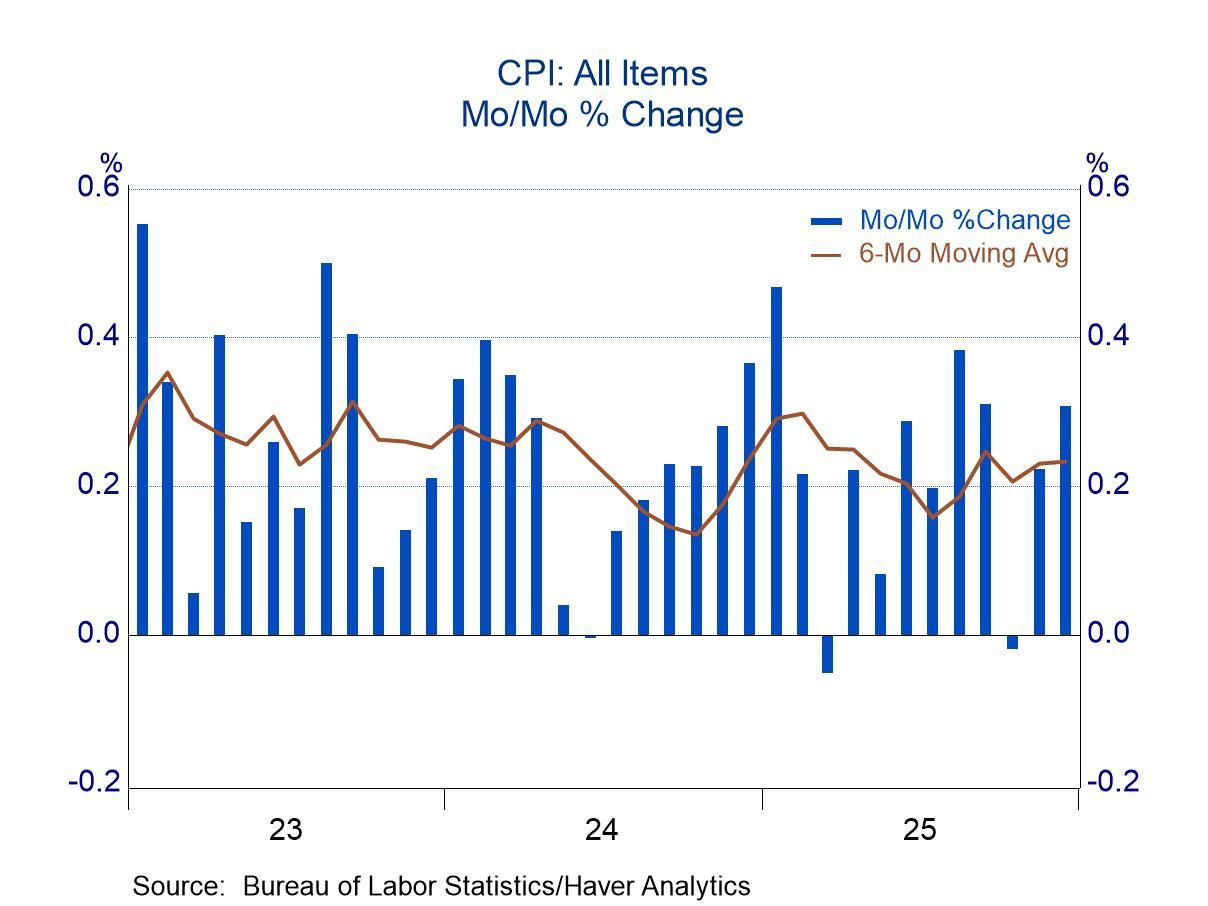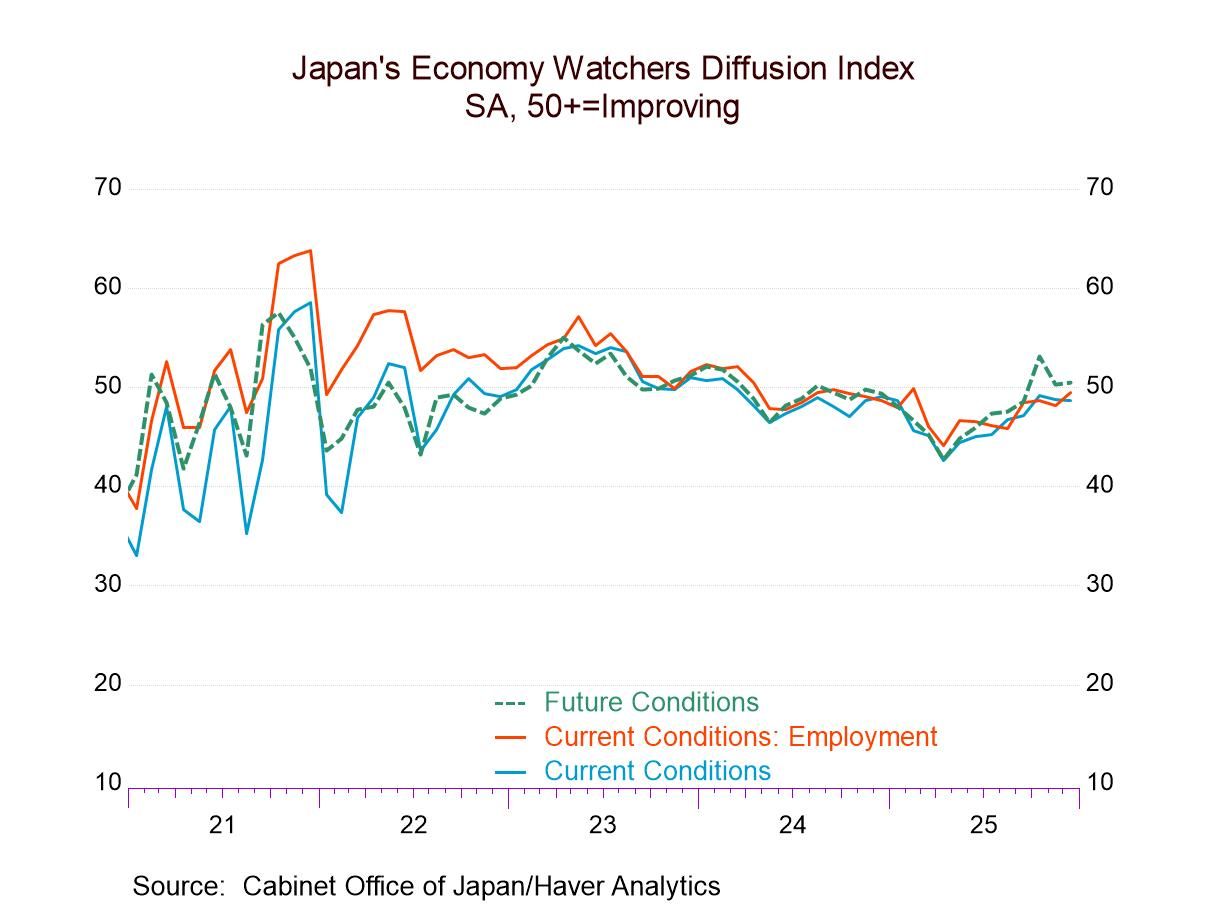 Global| May 29 2009
Global| May 29 2009U.S. 1Q GDP Decline Lessened, Yet Two-Quarter Drop Rivals 1958 Stats; Profits Recovered Modestly
by:Tom Moeller
|in:Economy in Brief
Summary
Last quarter, economic weakness in the U.S. was not quite as severe as reported initially by the Commerce Department. The latest estimate of a 5.7% (AR) drop in real GDP compares to the advance estimate of a 6.1% decline and the [...]
 Last quarter, economic weakness in the U.S. was not quite as
severe as reported initially by the Commerce Department. The latest
estimate of a 5.7% (AR) drop in real GDP compares to the advance
estimate of a 6.1% decline and the revision about matched Consensus
expectations. Nevertheless, combined with the 6.3% drop during 4Q '08
the GDP declines were still the worst since early-1958.
Last quarter, economic weakness in the U.S. was not quite as
severe as reported initially by the Commerce Department. The latest
estimate of a 5.7% (AR) drop in real GDP compares to the advance
estimate of a 6.1% decline and the revision about matched Consensus
expectations. Nevertheless, combined with the 6.3% drop during 4Q '08
the GDP declines were still the worst since early-1958.
As the financial sector recovered from its fourth quarter
swoon, it lifted the overall measure of corporate profitability. Total
corporate profits rose 3.4% (-18.0% y/y) last quarter due to a
near-doubling (-41.5% y/y) of financial sector earnings. That recovery
followed declines in the financial sector during the prior three
quarters which had dropped them to nearly one-quarter of the level at
the start of 2008.  Earnings in the nonfinancial sector countered that
1Q rise with an 8.6% decline (-13.4% y/y) which about matched the 4Q
shortfall. Earnings in the foreign sector continued down by 2.3% (-3.0%
y/y) as recessions abroad deepened.
Earnings in the nonfinancial sector countered that
1Q rise with an 8.6% decline (-13.4% y/y) which about matched the 4Q
shortfall. Earnings in the foreign sector continued down by 2.3% (-3.0%
y/y) as recessions abroad deepened.
The cutback of unwanted levels of inventories still is estimated to have subtracted significantly from GDP growth last quarter, but the estimate was lessened to 2.3 percentage points from 2.8 points. Regardless, the subtraction was the most since the first quarter of 2000 and it rivals the largest negative contribution from inventories since the early-1980s.
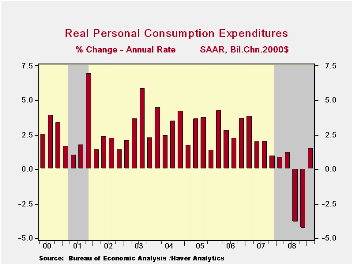 Unwanted inventory levels were reduced following the drop-off
in real U.S. final sales to domestic purchasers. They fell at a 5.3%
rate which was revised slightly from the earlier estimate of a 5.1%
decline. Combined with the 4Q '08 decline, final sales to domestic
purchasers fell the most since 1958.
Unwanted inventory levels were reduced following the drop-off
in real U.S. final sales to domestic purchasers. They fell at a 5.3%
rate which was revised slightly from the earlier estimate of a 5.1%
decline. Combined with the 4Q '08 decline, final sales to domestic
purchasers fell the most since 1958.
The rise in personal consumption expenditures last quarter was lessened to 1.6% (-1.4% y/y) from the initial estimate of a 2.2% increase. This modest increase followed sharp declines during the prior two quarters. Spending on motor vehicles rose moderately during the quarter (-18.7% y/y) after five consecutive down periods. Business fixed investment fell at a 36.9% rate (-16.0% y/y) and residential investment dropped at a 38.7% rate (-23.4% y/y) from 4Q. Both of these declines were significantly deeper than reported initially.
U.S. Household Deleveraging and Future Consumption Growth from the Federal Reserve Bank of San Francisco is available here.
The significant shortfall in expenditures by the government sector still accounts for much of last quarter's weakness in GDP. It was little revised at -3.5% and was the first decline since late-2005. The drop was led by a surprising 4.3% decline (+5.5% y/y) in Federal spending that was paced by a 6.7% decline (+5.1% y/y) in defense expenditures. State & local spending also fell at a 3.0% annual rate (-0.3% y/y).
The foreign trade sector made up for some of the economy's weakness as net exports contributed a little-revised 2.2 percentage points to 1Q GDP growth. Imports fell at a 34.1% annual rate (-16.5% y/y) while recessions abroad pulled U.S. exports down at a lesser 28.7% rate (-10.9% y/y).
Inflation continued to show signs of firming. The little revised 2.8% increase in the GDP chain price index was up from the 0.5% annual rate of increase during 4Q. The reason for the acceleration is that import prices fell at a faster rate than export prices. Domestic prices, however, reflected the weak economy. The PCE price index fell at a 1.0% annual rate (+0.8% y/y) while the residential investment chain price index fell at a 4.6% rate (-5.2% y/y). The weakness in business spending caused the nonresidential investment price index also to slip at a 1.2% rate (+2.4% y/y), the first quarterly decline since 2007. Overall, domestic prices fell at a 1.0% annual rate (+0.8% y/y) after a 4.3% 4Q decline.
The U.S. National Income & Product Account data is available in Haver's USECON and the USNA databases.
The Fed's Monetary Policy Response to the Current Crisis from the Federal Reserve Bank of San Francisco can be found here.
| Chained 2000$, % AR | 1Q '09 (Preliminary) | 1Q '09 (Advance) | 4Q '08 | 1Q Y/Y | 2008 | 2007 | 2006 |
|---|---|---|---|---|---|---|---|
| GDP | -5.7 | -6.1 | -6.3 | -2.5 | 1.1 | 2.0 | 2.8 |
| Inventory Effect | -2.3 | -2.8 | -0.1 | -0.8 | 0.1 | -0.4 | 0.0 |
| Final Sales | -3.4 | -3.4 | -6.2 | -1.7 | 1.4 | 2.4 | 2.8 |
| Foreign Trade Effect | 2.2 | 2.0 | -0.2 | -1.4 | 1.4 | 0.6 | 0.2 |
| Domestic Final Demand | -5.3 | -5.1 | -5.8 | -3.1 | -0.0 | 1.8 | 2.6 |
| Chained GDP Price Index | 2.8 | 2.9 | 0.5 | 2.1 | 2.2 | 2.7 | 3.2 |
Tom Moeller
AuthorMore in Author Profile »Prior to joining Haver Analytics in 2000, Mr. Moeller worked as the Economist at Chancellor Capital Management from 1985 to 1999. There, he developed comprehensive economic forecasts and interpreted economic data for equity and fixed income portfolio managers. Also at Chancellor, Mr. Moeller worked as an equity analyst and was responsible for researching and rating companies in the economically sensitive automobile and housing industries for investment in Chancellor’s equity portfolio. Prior to joining Chancellor, Mr. Moeller was an Economist at Citibank from 1979 to 1984. He also analyzed pricing behavior in the metals industry for the Council on Wage and Price Stability in Washington, D.C. In 1999, Mr. Moeller received the award for most accurate forecast from the Forecasters' Club of New York. From 1990 to 1992 he was President of the New York Association for Business Economists. Mr. Moeller earned an M.B.A. in Finance from Fordham University, where he graduated in 1987. He holds a Bachelor of Arts in Economics from George Washington University.



